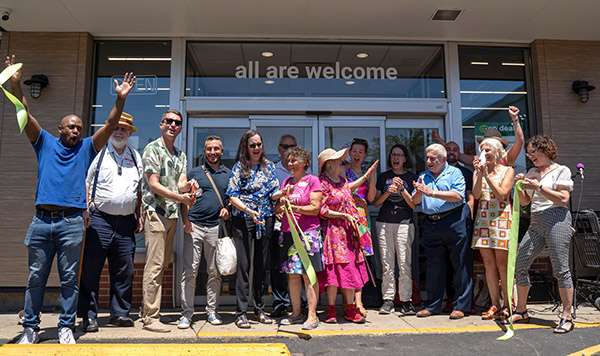The Center for Neighborhood Technology Offers New Strategies for Revitalizing Chicago’s Industrial Sector
 This election cycle, the dearth of American manufacturing jobs has taken a central role in the debate about the shrinking American middle class. With cheap labor abroad and the seemingly unstoppable march of automation, can manufacturing jobs ever return to American cities? Today, the Center for Neighborhood Technology (CNT) unveiled a new strategy for revitalizing Chicago’s Central Manufacturing District (CMD) as an Industrial EcoDistrict to bolster the region’s industrial sector.
This election cycle, the dearth of American manufacturing jobs has taken a central role in the debate about the shrinking American middle class. With cheap labor abroad and the seemingly unstoppable march of automation, can manufacturing jobs ever return to American cities? Today, the Center for Neighborhood Technology (CNT) unveiled a new strategy for revitalizing Chicago’s Central Manufacturing District (CMD) as an Industrial EcoDistrict to bolster the region’s industrial sector.
EcoDistricts link energy, transportation, water, and land use in an integrated, efficient resource system. They minimize waste by bundling multiple functions and services together, for multiple tenants. Cities around the country, from D.C. to Detroit, have begun experimenting with the EcoDistricts framework in residential areas. Industrial EcoDistricts build on the concept to make manufacturing – traditionally seen as a “dirty industry” – cleaner and more efficient.
CNT thinks this framework can help the southwest side’s Central Manufacturing District bring manufacturing back to northeast Illinois. In this vision, multiple manufacturers and related industries would locate at the CMD, taking advantage of shared services and regional-scale utilities. This model – and the site’s advantageous central location, solid construction, nearby rail connections, proximity to expressways, and robust fiber optic capacity – could make Chicago’s CMD once again a local industrial powerhouse, and a model nationally.
Such an approach is consistent with the strategy advanced recently by business and academic leaders in the President’s Council of Advisors on Science and Technology. In their report “Technology and the Future of Cities,” these experts advocate a district approach to using technology to strengthen urban economies, modernize infrastructure, and improve the quality of life.
CNT proposes that food manufacturing offers the best opportunity for an industry focus. The CMD could bolster food manufacturing by providing:
- Ultra-efficient energy systems
- A shared food laboratory
- Shared shipping and local distribution capacity
- Affordable, rail-based access to raw materials
- Incubator space for a broad range of companies: Startups (up to 1,500 sq. ft.), mid-size firms (5-15,000 sq. ft.) and large firms (up to 100,000 sq. ft.)
- Rooftop food production
Anchored by its landmark 12-story clock tower on Pershing Road, the CMD was the first planned manufacturing district in the United States. A century ago, 252 firms operated in its huge six-story buildings on Chicago’s southwest side. Tenants ranged from small manufacturers to big names like Wrigley, Ford, United (Rexall) Drug, Pullman, and Westinghouse Electric. With outstanding rail connections and a broad variety of shared services, the CMD became one of the largest industrial parks in the world.
Today, the CMD stands largely empty. City departments use a few floors to store old parade floats and voting machines. The huge rooms and high ceilings echo with memories of Chicago’s past as a manufacturing powerhouse.
The City of Chicago owns three of the CMD buildings and has been trying to sell them for the past three years. CNT calls on the City to adopt a new strategy focused on returning the property to manufacturing, but as a green, 21st century, state-of-the-art plant.
Press contact
Steve Perkins, 773.269.4055
steve@cnt.org





 Strengthening Transit Through Community Partnerships
Strengthening Transit Through Community Partnerships